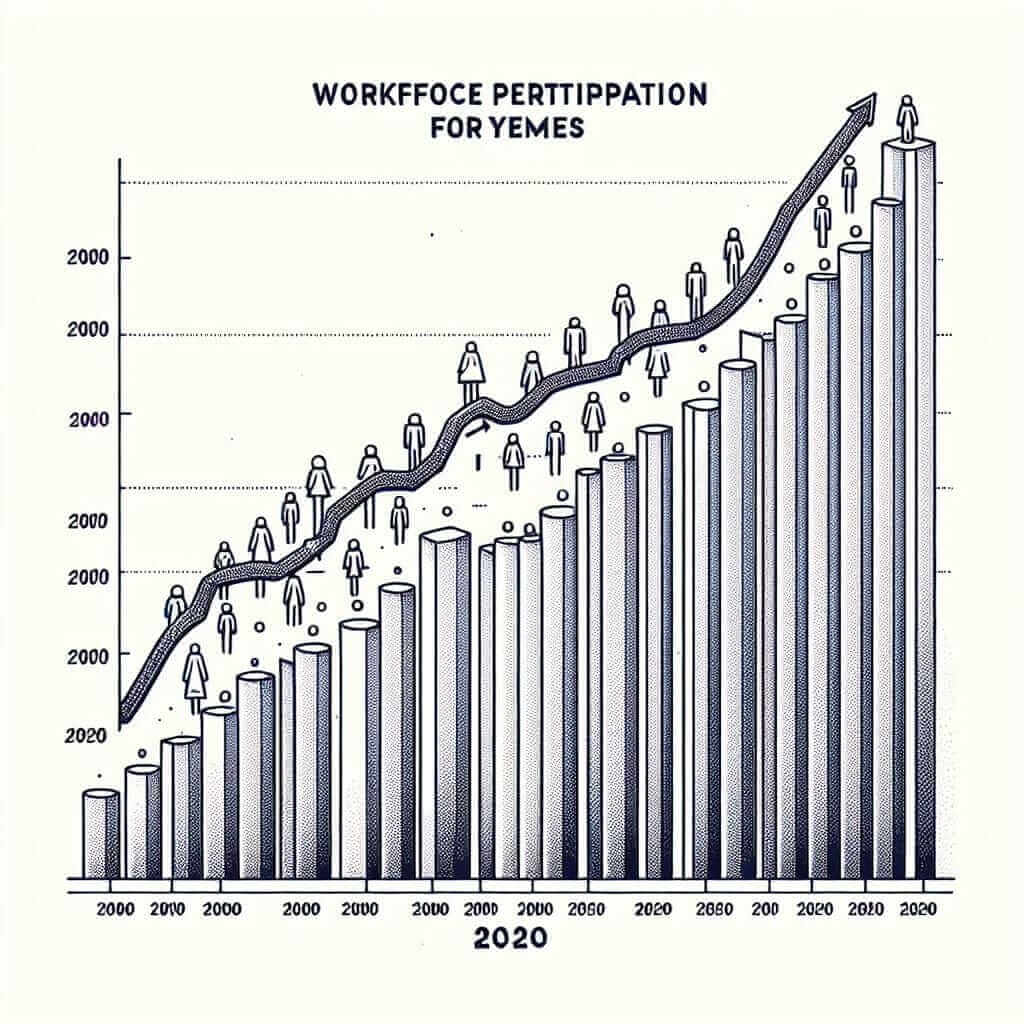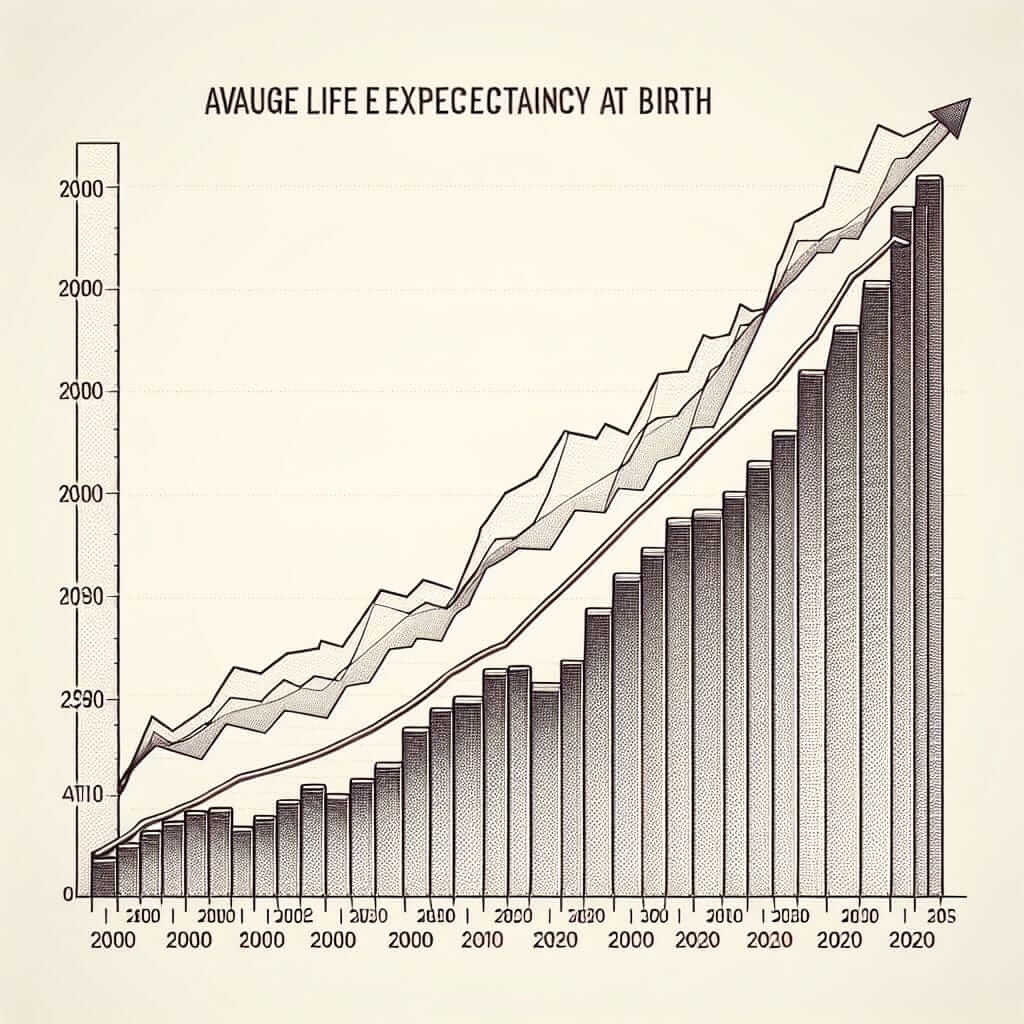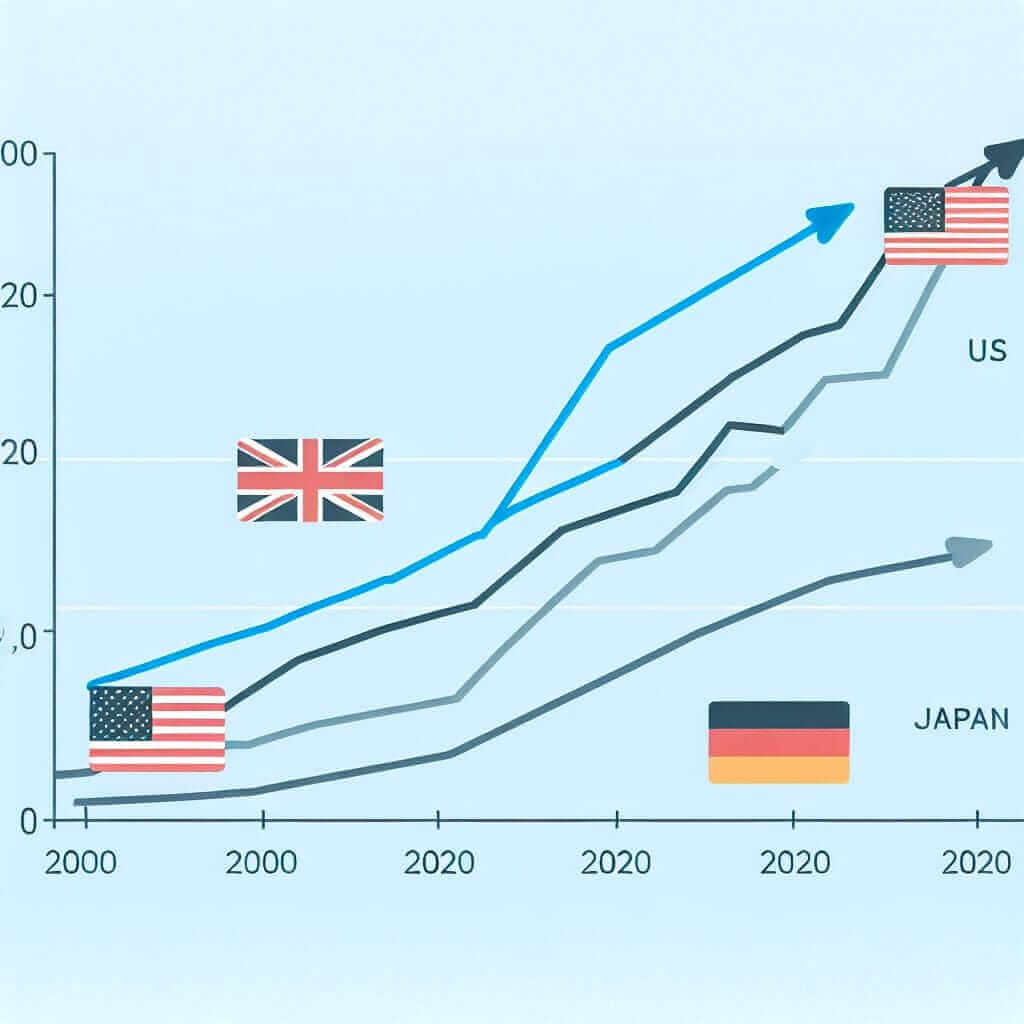“Workforce participation rates by gender” is a topic frequently appearing in the IELTS Writing Task 1. This essay will guide you through analyzing and writing about this topic effectively, aiming for a Band 7+ score. We’ll delve into real data, craft a model answer, and highlight essential vocabulary and grammar points.
Understanding the Topic
Before we begin, let’s clarify some key terms:
- Workforce Participation Rate: This figure represents the percentage of the working-age population (usually 15-64 years old) who are either employed or actively seeking employment.
- Gender: This refers to the social construct of roles, behaviors, and identities associated with being male, female, or non-binary.
Understanding these terms is crucial for accurate data interpretation and writing.
Sample Task
You should spend about 20 minutes on this task.
The chart below shows the workforce participation rates for men and women in a particular country between 2000 and 2020.
Summarize the information by selecting and reporting the main features and make comparisons where relevant.
Write at least 150 words.
 Workforce Participation Rates by Gender
Workforce Participation Rates by Gender
| Year | Men (%) | Women (%) |
|---|---|---|
| 2000 | 80 | 55 |
| 2005 | 78 | 60 |
| 2010 | 75 | 65 |
| 2015 | 72 | 68 |
| 2020 | 70 | 70 |
Data Analysis
The line graph illustrates the workforce participation rates of men and women in a specific country over two decades, from 2000 to 2020.
Model Answer
The line graph provides an overview of the workforce participation rates for men and women in a particular country from 2000 to 2020. Overall, the participation rate for men experienced a gradual decline, while the rate for women showed a steady increase, ultimately reaching parity by 2020.
At the start of the period, 80% of men were participating in the workforce, compared to only 55% of women. This substantial gap of 25 percentage points indicates a significant disparity in labor force engagement between genders. Over the next decade, the male participation rate decreased gradually, reaching 75% by 2010. In contrast, the female participation rate displayed a steady upward trend, climbing to 65% in the same year.
This trend of converging participation rates continued until 2020, when both genders reached an equal rate of 70%. The closing of the gap suggests a move towards greater gender balance in the workforce over the two decades.
(Word count: 159 words)
Key Observations
- Trends: Identify overall trends (increasing, decreasing, fluctuating).
- Comparisons: Compare the rates between genders.
- Significant Features: Highlight key data points, like the point of parity in 2020.
Vocabulary Highlights
- Workforce participation rate: (n) The percentage of people of working age who are employed or actively seeking work.
- Gender: (n) The state of being male or female (in this context, considering social factors rather than biological).
- Disparity: (n) A great difference.
- Converging: (v) Tending to meet at a point.
- Parity: (n) The state of being equal.
Grammar Tips
- Use the present simple tense to describe the graph.
- Use comparative and superlative adjectives to compare data.
- Use linking words and phrases (e.g., however, in contrast, similarly) to connect ideas and ensure coherence.
Conclusion
Mastering the analysis and description of workforce participation rates by gender is achievable with practice. Remember to identify key trends, make relevant comparisons, and use precise vocabulary. By following these tips and practicing regularly, you’ll be well-equipped to achieve a Band 7+ on your IELTS Writing Task 1.


